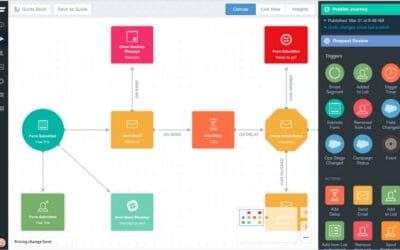In an increasingly digital world, mobile website optimization is no longer optional; it’s a necessity. With over half of global internet traffic now coming from mobile devices, local business owners must prioritize mobile website optimization. Discover why mobile optimization is crucial for local businesses and provide 10 practical tips to enhance mobile usability.
Why Mobile Optimization Matters for Local Businesses
 Local businesses are often competing with larger corporations that have more resources. In this environment, a well-optimized mobile website site can provide a significant advantage.
Local businesses are often competing with larger corporations that have more resources. In this environment, a well-optimized mobile website site can provide a significant advantage.
A perfect example of a optimized website is to your right, and below are reasons why mobile website optimization is critical:
- Improved User Experience: A mobile-optimized site enhances the user experience, making it easier for customers to navigate and find the information they need.
- Higher Search Rankings: Search engines prioritize mobile-friendly websites in their results. A well-optimized mobile site can improve your visibility and attract more visitors.
- Increased Conversion Rates: A better mobile experience can lead to higher conversion rates, as users are more likely to engage with a site that is easy to use on their devices.
- Local Search Traffic: Many local searches are conducted on mobile devices. If your website isn’t optimized, you risk losing potential customers who are searching for services on the go.
- Competitive Edge: By optimizing your website for mobile, you can stand out from competitors who might not prioritize mobile usability.
10 Tips for Mobile Website Optimization
1. Responsive Design
Implement a responsive web design that adapts to different screen sizes. This ensures that your website looks and functions well on any device, providing a seamless experience for users.
2. Optimize Loading Speed
Mobile users are often on the go and expect fast-loading pages. Use tools like Google PageSpeed Insights to analyze your site’s speed and implement suggestions to improve loading times. Compress images and minimize code to enhance performance.
3. Simplify Navigation
Mobile users should easily navigate your site. Use a simple menu structure and limit the number of clicks needed to reach important content. Consider using a hamburger menu to save space while providing access to all pages.
4. Use Large, Readable Fonts
Small text can be difficult to read on mobile screens. Use larger font sizes and ensure that there is sufficient contrast between the text and background. This will improve readability and enhance the overall user experience.
5. Optimize Images and Videos
Large files can slow down your website. Optimize images and videos by compressing them without losing quality. Consider using modern formats like WebP for images, which are smaller in size and maintain quality.
6. Implement Touch-Friendly Buttons
Buttons and links should be easy to tap on mobile devices. Ensure that buttons are large enough and spaced adequately to prevent users from accidentally clicking the wrong link. Test your site on various devices to ensure functionality.
7. Avoid Pop-Ups
Pop-ups can be frustrating for mobile users and may lead to higher bounce rates. If you use pop-ups, ensure they are easy to close and do not cover essential content, or have them load after a website visitor engages on your website. Consider using slide-ins instead of full-screen pop-ups.
8. Local SEO Practices
Optimize your website for local searches by including location-based keywords in your content and metadata. Ensure your business information, such as name, address, and phone number, is consistent across all platforms, including Google My Business.
9. Test for Mobile Compatibility
Regularly test your website on different devices and screen sizes to identify any issues. Utilize tools like BrowserStack or Google Mobile-Friendly Test to ensure your site performs well across various platforms.
10. Monitor Analytics
Use analytics tools to track user behavior on your mobile site. Understanding how users interact with your site can help you identify areas for improvement. Adjust your strategies based on this data to enhance user experience and increase conversions.
Mobile Website Optimization Is Critical
In conclusion, mobile website optimization is essential for local business owners looking to thrive in a competitive market. By following these ten tips, you can create a mobile-friendly experience that attracts and retains customers. Remember, a well-optimized mobile site not only improves user experience but also boosts your search rankings and conversion rates, ultimately driving more business your way.







